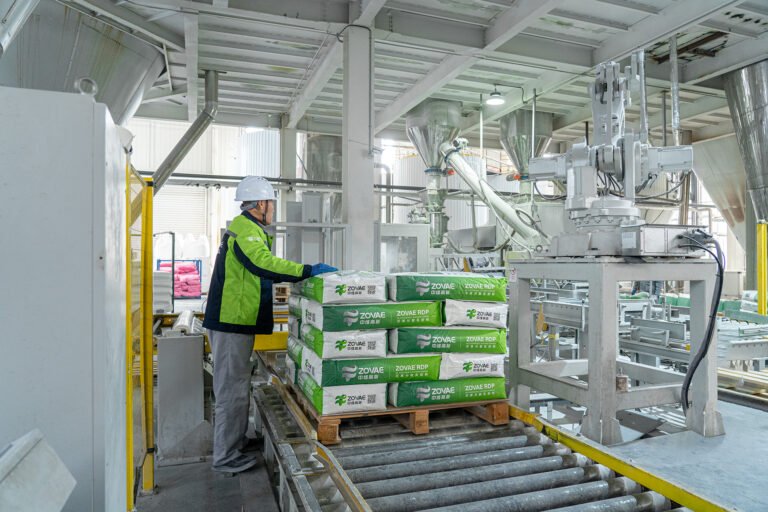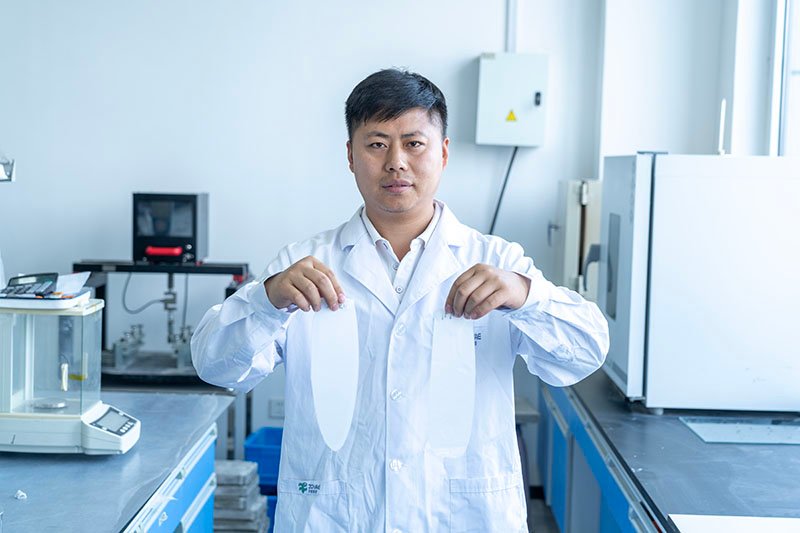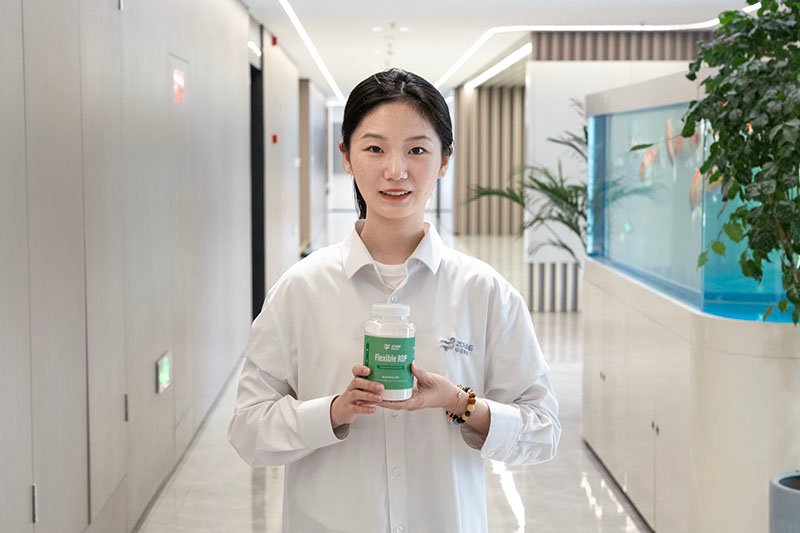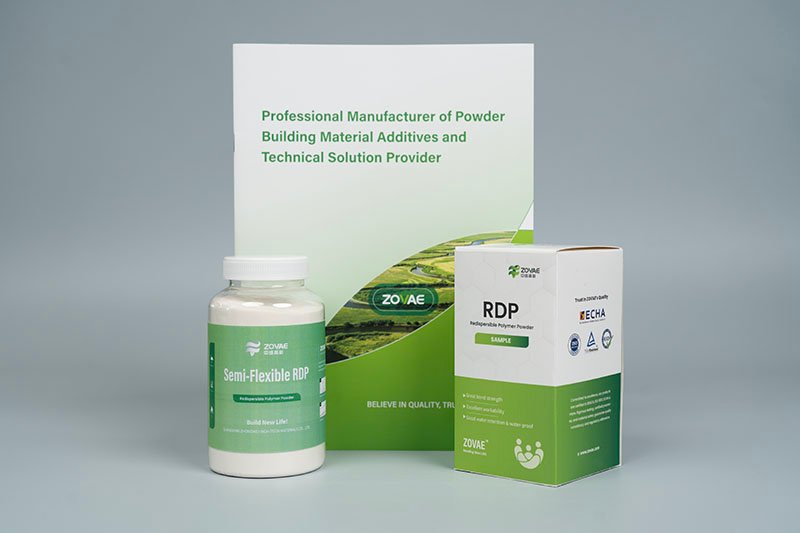Executive Summary
Redispersible polymer powders (RDPs) stand as pivotal components in the evolution of modern dry-mix technology, elevating basic cement and gypsum binders into superior mortars that offer enhanced ease of application, robust bonding, resilience to structural movement, and endurance under challenging environmental conditions. Created through the spray-drying of polymer emulsions with a protective colloid, RDPs rehydrate in water during on-site mixing, subsequently forming a continuous polymer film as the mortar cures. This film integrates with the mineral matrix, sealing pores, bridging microcracks, enhancing adhesion to diverse substrates, and imparting both toughness and longevity.
While a wide array of chemical compositions exists, a select few dominate practical applications: vinyl acetate–ethylene (VAE/E), ethylene–vinyl chloride–lauric acid (E/VC/VL), and vinyl acetate–ethylene–vinyl ester of versatic acid (VAE/E/VeoVa) collectively represent over 80% of global consumption. Among these, VAE/E remains the universal standard due to its optimal blend of affordability, workability, adhesion, flexibility, and environmental compatibility across various uses, including tile adhesives, self-leveling underlayments (SLUs), ETICS/EIFS basecoats, renders, skim coats, and repair mortars. Specialized RDPs, such as those based on VAE/VeoVa, styrene–acrylic (A/S), VAE/A/VeoVa, and styrene–butadiene rubber (SBR), push the boundaries further into extreme durability, wet adhesion, and significant elongation for applications like flexible waterproof coatings and robust repair solutions.
This extensive guide delves into the mechanics of RDPs, provides detailed profiles of each major polymer family with their inherent strengths, limitations, and ideal applications, correlates polymer selection to typical construction scenarios, and offers pragmatic advice on dosage, compatibility, testing, troubleshooting, and environmental, health, and safety (EHS) considerations. It wraps up with a structured selection framework and illustrative starting formulations. Zovae RDP Solutions are highlighted as reliable, versatile options, seamlessly compatible with complementary additives like Landercoll cellulose ethers, superplasticizers, and construction-grade defoamers, ensuring consistent field performance.
1) RDP Fundamentals: How They Are Made and Why They Work
Redispersible polymer powders begin as waterborne polymer dispersions, or latex, synthesized through emulsion polymerization—a process where monomers are polymerized in an aqueous medium with surfactants to form stable colloidal particles. To transform these liquid dispersions into a dry, flowable powder suitable for industrial dry-mix blending, the emulsion undergoes spray-drying with a protective colloid, commonly polyvinyl alcohol (PVA) or similar nonionic polymers. During this process, the colloid encapsulates individual polymer particles, preventing irreversible clumping during drying and storage. Additional anti-caking agents and flow enhancers are incorporated to maintain the powder’s free-flowing nature, ensuring ease of handling and batch consistency in manufacturing environments.
On construction sites, when a dry-mix formulation containing RDP is blended with water, the powder redisperses: the protective colloid dissolves and releases discrete polymer particles into the fresh mortar mix. As moisture is consumed by cement hydration, substrate absorption, and evaporation, these particles draw closer, deform under capillary forces, and ultimately merge into a cohesive polymer film. The resulting material is a hybrid mineral–polymer composite, comprising a hydrated cement or gypsum matrix interlaced with a flexible polymer network. This intertwined structure underpins a range of performance enhancements:
- Adhesion and Wetting: The polymer film improves the wetting of low-porosity surfaces (e.g., porcelain tiles, dense concrete) and contributes both polar and dispersive intermolecular forces, significantly boosting bond strength to substrates that would otherwise resist cement adhesion.
- Flexibility and Crack Bridging: The continuous film spans microdefects within the mortar, dissipating stress concentrations and enhancing deformability, which is critical for achieving S1/S2 classifications in tile adhesives under standards like EN 12004.
- Cohesion and Dust Resistance: By binding fine particles, the polymer reduces surface friability and prevents dusting, a common issue in unmodified mortars, thus improving the finish and longevity of skim coats.
- Water Resistance and Durability: Hydrophobic comonomers integrated into the polymer backbone and the density of the formed film lower permeability and mitigate water whitening effects, enhancing resistance to freeze–thaw cycles and maintaining wet adhesion in damp environments.
- Workability: In the fresh state, RDPs often impart a creamy texture and improved cohesiveness to the mortar mix, facilitating smoother trowel application, better edge retention in vertical installations, and extended open time for adjustments during tiling or rendering.
Two thermal properties are paramount in RDP selection for specific applications:
- Tg (Glass Transition Temperature): This indicates the temperature at which polymer chains transition from a glassy to a rubbery state, reflecting chain mobility. A lower Tg enhances flexibility and film formation at colder temperatures, ideal for deformable adhesives, while a higher Tg provides hardness and block resistance, beneficial for surface finishes like skim coats.
- MFFT (Minimum Film Formation Temperature): This is the lowest temperature at which latex particles can coalesce into a continuous film. For construction applications in variable climates, selecting an RDP with a lower MFFT ensures proper film formation under cool or humid conditions, preventing powdery, ineffective films.
The choice of protective colloid also plays a significant role. PVA-based systems are favored for their excellent redispersion properties and are prevalent in the industry. However, PVA’s hydrophilic nature can increase water sensitivity if not balanced by hydrophobic comonomers (e.g., ethylene, VeoVa, or laurates) within the polymer structure or through formulation adjustments. Advances in colloid chemistry and polymer design have mitigated these concerns in contemporary RDP grades, ensuring reliable performance across diverse environmental challenges.
2) The Main RDP Families: Chemistries, Advantages, and Ideal Uses
Despite variations in naming across manufacturers, the predominant RDP families utilized in cementitious systems are categorized by their monomer compositions. Each family offers distinct characteristics tailored to specific performance needs.
2.1 Vinyl Acetate–Ethylene (VAE/E)
Essentials
- Composition: A copolymer of vinyl acetate (VAc) and ethylene (E), processed into a powder form via spray-drying with a protective colloid.
- Typical Profile: Offers a wide range of Tg and MFFT values adjustable through ethylene content, providing an effective balance of adhesion, flexibility, workability, and cost-efficiency.
Technical Advantages
- Workability and Cohesion: Known for its “creamy” rheological behavior, enhancing trowel feel, maintaining edge stability, and providing anti-slump properties in fresh mortar mixes.
- Adhesion to Low-Porosity Surfaces: Extensively validated for bonding to challenging substrates like porcelain and vitrified tiles, particularly when combined with suitable cellulose ethers and optimized filler gradations.
- Deformability: Capable of achieving S1 deformability standards in tile adhesives at appropriate dosages, especially when supported by complementary rheology modifiers.
- Water Resistance: Offers adequate resistance to water whitening for interior and protected exterior applications, with performance further improved in ternary variants incorporating VeoVa comonomers.
- Alkali Resistance: Formulated to endure the alkaline environment of cementitious systems, with modern iterations showing robust resistance to saponification under typical service conditions.
Trade-offs and Notes
- Extreme Wet Exposure: Standard VAE/E may underperform in constantly submerged or chemically aggressive settings compared to specialized chemistries like VAE/E/VeoVa.
- Temperature Sensitivity: Performance at very low temperatures necessitates grades with reduced MFFT or specific coalescent strategies to ensure film formation, avoiding risks near freezing points.
Applications
- Tile adhesives meeting C1/C2, E, T, and S1 classifications under EN 12004, or ANSI A118.4/A118.15 when appropriately formulated.
- Self-leveling underlayments (SLUs) requiring enhanced bond and abrasion resistance without excessive flexibility.
- Skim coats, wall putties, and gypsum plasters for improved adhesion and dust suppression.
- Renders and ETICS/EIFS basecoats at moderate dosages for crack resistance and adhesion to insulation materials like EPS/XPS.
2.2 Ethylene–Vinyl Chloride–Lauric Acid (E/VC/VL)
Essentials
- Composition: A ternary copolymer comprising ethylene (E), vinyl chloride (VC), and lauric acid-based vinyl esters (VL).
- Typical Profile: Characterized by excellent water and alkali resistance, superior wet adhesion, and strong film integrity across thermal cycles.
Technical Advantages
- Water Resistance and Wet Adhesion: VC segments and laurate hydrophobes increase film density, minimizing water whitening and enhancing performance after immersion.
- Heat and UV Stability: Forms durable films suited for extreme climates and high-temperature exposure.
- Chemical Resistance: Offers heightened resilience in alkaline cement environments, fitting for areas with periodic moisture contact.
Trade-offs and Notes
- Regulatory and Sustainability Considerations: The chlorine content may pose challenges in end-of-life disposal or incineration under certain regional policies; compliance with local EHS regulations is essential.
- Cost and Availability: Often commands a higher price and may have variable regional availability.
Applications
- Exterior renders and basecoats subject to weathering.
- Tile adhesives and façade mortars necessitating strong wet adhesion and heat tolerance.
- Specialty repair mortars and industrial overlays where water whitening must be curtailed.
2.3 Vinyl Acetate–Ethylene–VeoVa (VAE/E/VeoVa)
Essentials
- Composition: Combines vinyl acetate and ethylene with vinyl esters of versatic acid (VeoVa), a bulky, hydrophobic comonomer reducing water uptake and enhancing alkali resistance.
- Typical Profile: Merges VAE/E’s workability with exceptional water resistance, wet adhesion, and weatherability.
Technical Advantages
- Hydrophobicity and Wet Strength: VeoVa lowers polarity and water absorption, bolstering tile adhesive performance post-water immersion and during freeze–thaw cycles.
- Open Time and Slip: Frequently extends open time with managed slump when paired with appropriate cellulose ethers.
- Versatility Across Climates: Customizable Tg/MFFT profiles support performance from chilly, wet environments to hot, dry regions.
Trade-offs and Notes
- Cost vs. Benefit: Typically priced higher than basic VAE/E, yet offers significant durability benefits in harsh conditions, justifying the investment.
Applications
- High-end tile adhesives for porcelain, large-format tiles, and low-porosity substrates.
- ETICS/EIFS adhesives and basecoats prioritizing durability and wet adhesion.
- Flexible waterproof cementitious coatings as part of hybrid polymer blends.
- Superior skim coats and façade putties.
2.4 Vinyl Acetate–VeoVa (VAE/VeoVa)
Essentials
- Composition: VAc copolymerized with VeoVa, often without ethylene, leaning toward harder properties with enhanced hydrolytic stability.
- Typical Profile: Higher Tg potential with notable hydrophobicity; exceptional weatherability; ideal for renders and façade coatings benefiting from block resistance.
Technical Advantages
- Water and Alkali Resistance: VeoVa’s steric hindrance curbs saponification, ensuring film integrity in alkaline cementitious environments.
- Film Hardness: Elevated Tg enhances abrasion resistance and block resistance, crucial for thin coats and skim applications.
- Color Retention: Advantageous in pigmented putties and render finishes for lasting aesthetic appeal.
Trade-offs and Notes
- Flexibility: May necessitate blending with lower Tg polymers or plasticizing approaches for applications requiring significant deformability (e.g., S1/S2 tile adhesives).
Applications
- Exterior renders and pigmented putties.
- Skim coats requiring hardness and surface resilience.
- Decorative mortars where block and dirt pick-up resistance are priorities.
2.5 Acrylic–Styrene (A/S, Often “Styrene–Acrylic”)
Essentials
- Composition: Acrylic monomers copolymerized with styrene, spray-dried with a protective colloid.
- Typical Profile: Outstanding UV and weathering resistance, high wet adhesion, and broad chemical durability.
Technical Advantages
- Durability: Exceptional long-term color and film stability under UV exposure, coupled with strong alkali resistance.
- Wet Adhesion to Challenging Substrates: Effective in thin-section mortars, patching compounds, and polymer-rich coatings.
- Low MFFT Options: Custom grades can form films at lower temperatures without additional plasticizers.
Trade-offs and Notes
- Cost: Generally more expensive than standard VAE/E.
- Workability: Rheology might be less creamy compared to VAE/E; adjust with appropriate cellulose ether selection and dosage.
Applications
- Durable renders, façade putties, and finish coats.
- Flexible cementitious waterproofing and crack-bridging slurries, often in blends.
- Specialty repair mortars prioritizing chemical and weather resistance.
2.6 Vinyl Acetate–Acrylic–VeoVa (VAE/A/VeoVa)
Essentials
- Composition: A ternary formulation blending VAE’s workability, acrylics’ durability, and VeoVa’s hydrophobic stability.
- Typical Profile: Balanced adhesion, flexibility, wet strength, and weatherability.
Technical Advantages
- “All-Rounder” Behavior: Bridges VAE/E’s ease of use with acrylic durability while resisting water whitening.
- Tailorable Properties: Adjustable monomer ratios allow targeting of open time, slip resistance, early strength, and long-term endurance.
Trade-offs and Notes
- Complexity and Cost: Ternary chemistry often costs more than standard options; optimal for scenarios demanding multiple performance attributes simultaneously.
Applications
- Premium thin-bed tile adhesives with extended open time and wet adhesion.
- ETICS basecoats in harsh climates.
- High-end skim coats and leveling compounds requiring both hardness and wet adhesion.
2.7 SBR (Styrene–Butadiene Rubber) Powders
Essentials
- Composition: Spray-dried SBR latex, historically used as a liquid but now available in powder form for one-component dry mixes.
- Typical Profile: Excellent flexibility and crack-bridging capacity, robust wet adhesion, proven in repair and waterproofing applications.
Technical Advantages
- Toughness and Elongation: High crack-bridging ability for dynamic substrates and thermal expansion.
- Bonding to Difficult Surfaces: Superior in repair mortars and bonding slurries to aged concrete or steel, with proper surface preparation.
- Water Resistance: Strong wet performance in numerous cementitious systems.
Trade-offs and Notes
- UV Sensitivity: Unmodified SBR may degrade under UV exposure; protect with coatings in exterior settings.
- Odor and Cost: Some grades might have a noticeable odor; high performance often comes at a premium price.
Applications
- Repair mortars, bonding slurries, and patching compounds.
- Flexible waterproofing slurries and negative-side damp-proof mixes.
- High-deformation tile adhesives, often blended with other RDPs to achieve S1/S2 ratings.
2.8 Other Specialty Binary and Ternary Copolymers
- VA/E/BA (Butyl Acrylate): Incorporates butyl acrylate as a soft segment for low Tg and enhanced flexibility.
- PVAc with Hydrophobic Monomers: Offers improved hydrolytic stability for specific durability needs.
- Specialty Fluorinated or Silicone-Modified Powders: Provide extreme water repellency for niche applications.
- Carboxylated Variants: Enhance interaction with cement hydrates and fillers for specialized bonding requirements.
3) How RDPs Transform Mortar Performance: Fresh and Hardened States
Fresh State Effects
- Workability and Cohesiveness: Polymer particles and protective colloids reduce friction in particle packing, yielding a creamy, thixotropic mix that applies smoothly while maintaining ridge stability, essential for tile adhesives.
- Water Retention and Open Time: Protective colloids and polymer films slow water loss to absorbent substrates, prolonging open time and ensuring uniform cement hydration.
- Slip Resistance and Edge Stability: Improved cohesiveness aids in maintaining ridge shapes, reducing tile slippage on vertical surfaces when combined with optimized cellulose ethers and aggregate gradations.
- Pumpability and Flow: In SLUs, low to moderate RDP dosages enhance cohesion and minimize segregation; balance with superplasticizers to prevent excessive softness.
Hardened State Effects
- Adhesion: Polymer films improve substrate wetting and anchoring, boosting tensile adhesion strength initially and after stressors like water immersion or heat aging, with performance varying by polymer type.
- Flexural Strength and Toughness: Polymers bridge microcracks, increasing flexural capacity and energy absorption, though high polymer levels might slightly reduce compressive strength.
- Water Resistance: Hydrophobic comonomers (e.g., VeoVa, laurates) and dense films decrease capillarity and water whitening, improving freeze–thaw durability when air content is managed.
- Shrinkage and Crack Control: The polymer network disperses stress, reducing microcracking, particularly in thin renders and coatings.
- Abrasion and Surface Integrity: Higher-Tg, harder polymers enhance abrasion resistance in skim coats and SLUs, while softer polymers increase deformability for flexible applications.
4) Mapping Polymer Families to Applications
Tile Adhesives (Thin-Bed)
- Priorities: Extended open time, wet adhesion, deformability (S1/S2), slip resistance, bonding to dense tiles.
- Recommended Families: VAE/E for standard C2; VAE/E/VeoVa for superior wet strength; VAE/A/VeoVa or acrylic–styrene for extreme climates or immersion areas; blends with SBR for high deformability.
- Indicative Dosage: 2.0–4.0% for standard C2; 3.0–6.0% for low-porosity tiles or deformable systems (adjust per target specs).
Self-Leveling Underlayments (SLU)
- Priorities: Flow, minimal pinholing, substrate adhesion, abrasion resistance, controlled setting.
- Recommended Families: VAE/E or VAE/VeoVa at low to moderate doses to prevent excessive softness; acrylic–styrene for high-wear applications.
- Indicative Dosage: 0.5–2.0%, based on binder and filler system; combine with PCE superplasticizers and powder defoamers.
Skim Coats and Putties (Cement or Gypsum)
- Priorities: Smooth knife glide, few pinholes, hardness, sandability, low chalking.
- Recommended Families: VAE/E for glide and cohesion; VAE/VeoVa for hardness and block resistance; acrylic–styrene or VAE/A/VeoVa for exterior durability.
- Indicative Dosage: 0.5–3.0%.
Renders and ETICS/EIFS Basecoats
- Priorities: Adhesion to EPS/XPS/mineral wool, crack resistance, weatherability, water resistance.
- Recommended Families: VAE/E for standard uses; VAE/E/VeoVa or VAE/VeoVa for wet adhesion and hydrolysis resistance; acrylic–styrene for intense UV exposure on façades.
- Indicative Dosage: 1.0–4.0%.
Repair Mortars and Bonding Slurries
- Priorities: Adhesion to aged concrete, toughness, reduced rebound (for sprayed applications), durability.
- Recommended Families: SBR and acrylic–styrene; VAE/E/VeoVa blends for water and alkali stability.
- Indicative Dosage: 3.0–10.0%, depending on repair class and layer thickness.
Flexible Waterproofing Slurries (1K/2K)
- Priorities: Crack bridging, negative-side performance, wet adhesion.
- Recommended Families: SBR, acrylic–styrene, and VAE/E/VeoVa blends optimized for flexibility and water resistance.
- Indicative Dosage: 5.0–12.0%, often with higher polymer-to-cement ratios.
Grouts and Masonry Adhesives
- Priorities: Reduced efflorescence, abrasion resistance, color stability, bond strength.
- Recommended Families: VAE/E for bond and cohesion; VAE/VeoVa or acrylic–styrene for color and abrasion stability.
- Indicative Dosage: 0.5–3.0%.
5) Dosage Guidelines and Balancing Acts
RDP is a potent additive, but excessive use can be counterproductive. Typical dosage ranges for dry-mix systems include:
- Skim Coats: 0.5–3.0%
- Renders/ETICS Basecoats: 1.0–4.0%
- Tile Adhesives: 2.0–4.0% (3.0–6.0% for low-porosity tiles or high deformability)
- SLU: 0.5–2.0%
- Repair Mortars/Bonding Slurries: 3.0–10.0%
- Flexible Waterproofing: 5.0–12.0%
Balance Considerations:
- Too Low: Insufficient wet adhesion, brittle failure post-immersion or heat exposure.
- Too High: Excessive softness, diminished compressive strength, delayed drying, risk of dirt pick-up on exterior finishes.
- Adjustment Strategy: Tailor Tg/MFFT through polymer selection rather than over-relying on increased dosage to achieve flexibility or other properties.
6) Compatibility and Interactions in Cementitious Systems
Cements and SCMs
- Cement chemistry influences setting behavior and polymer film formation. Elevated alkali levels can challenge hydrolysis-sensitive polymers, though modern RDPs are engineered to withstand such conditions.
- Supplementary cementitious materials (SCMs) like slag or fly ash alter pore solution chemistry and setting rates; recalibrate cellulose ether and RDP levels when SCM proportions change.
Aggregates and Fillers
- Fine aggregates enhance cohesion but increase water demand; a well-graded particle distribution prevents over-reliance on polymer for workability.
- Carbonate fillers can moderate pH and affect set dynamics; silica flour densifies the microstructure but may necessitate additional defoamer to control air content.
Cellulose Ethers (HPMC/HEMC)
- Synergy: Cellulose ethers retain water and structure the paste, while RDP boosts cohesion and adhesion. Select viscosity grade and substitution level to optimize open time, slip resistance, and workability.
- Dosage Caution: Excessive cellulose ether can trap air and hinder wetting; counteract with an appropriate powder defoamer.
Starch Ethers and Thickeners
- Starch ethers adjust early thixotropy; overuse can promote bubble retention, requiring a balanced defoamer dosage.
Defoamers
- Powder defoamers are critical in polymer-rich mixes to prevent microfoam and pinholes; ensure compatibility with both cellulose ether and polymer (e.g., Zovae Powder Defoamer).
Superplasticizers
- Polycarboxylate ethers (PCEs) achieve high flow with reduced water but can influence foam behavior and set times. Verify polymer–PCE compatibility, as some PCEs reduce air while others increase it, and adjust defoamer levels accordingly.
Hydration and Set Control
- RDPs may slightly delay hydration. Incorporate cement-compatible accelerators or modify gypsum/hemihydrate ratios to meet schedule demands without compromising film formation.
Incoming RDP Checks
- Appearance, bulk density, moisture content, and anti-caking properties.
- Redispersibility: Conduct shake/rehydration tests to assess particle size post-redispersion.
- pH and ash content; compare MFFT/Tg with supplier specifications.
- Film properties: Measure tensile strength and elongation as baseline references.
Mortar Tests (Application-Dependent)
- Workability/Flow: Use flow table or slump cone for SLUs; assess trowel/ridge stability for adhesives.
- Open Time: Evaluate tile pull-off strength after specified air exposure periods.
- Slip: Measure vertical tile slip under load.
- Tensile Adhesion: Test initially and post-stressors like water immersion, heat aging, and freeze–thaw cycles (e.g., EN 12004 standards).
- Deformability: Assess S1/S2 classifications via transverse deformation.
- Compressive/Flexural Strength: Use standard prisms or cubes.
- Water Absorption and Vapor Diffusion: Evaluate suitability for façade applications.
- Abrasion Resistance: Test for SLU and grout durability.
- Pinholes/Surface Quality: Conduct drawdowns and visual grading, supported by optimized powder defoamer use.
8) Troubleshooting Guide
Low Wet Adhesion After Immersion
- Likely Causes: Insufficient polymer dosage, inadequate hydrophobicity in polymer chemistry, high water demand, excessive air entrainment.
- Fixes: Increase RDP by 0.5–1.0% points; transition from VAE/E to VAE/E/VeoVa or VAE/A/VeoVa; refine cellulose ether and defoamer selection; lower mixing water content.
Soft Surface or Poor Abrasion Resistance
- Causes: Excessive soft polymer, very low Tg, high residual moisture during early testing.
- Fixes: Decrease polymer content or blend with a higher Tg grade; extend drying duration before testing; boost cement content or utilize harder fillers.
Short Open Time; Dry-Out on Hot, Absorptive Substrates
- Causes: High substrate suction, low cellulose ether dosage, elevated ambient temperature or airflow.
- Fixes: Apply suction-control primer; increase cellulose ether or opt for a higher water-retention grade; select a polymer with lower MFFT; incorporate open-time extenders.
Excessive Vertical Slip
- Causes: Low thixotropy, overly plasticized mix, rounded sand particle distribution.
- Fixes: Adjust cellulose ether/starch ether ratios; refine filler grading; reduce polymer slightly or switch to a grade enhancing body.
Pinholes and Surface Craters
- Causes: Microfoam from high-shear mixing, incompatible defoamer, excessive starch ether.
- Fixes: Increase powder defoamer dosage; switch defoamer chemistry; reduce shear or introduce a rest-and-remix step; adjust starch ether levels.
Caking of RDP in the Plant
- Causes: Moisture ingress, high storage temperatures, prolonged silo dwell times.
- Fixes: Enhance bag/silo sealing; maintain low-humidity storage; rotate stock using first-in, first-out (FIFO) principles; consider anti-caking enhancements.
9) EHS, Regulatory, and Sustainability Notes
- Dust and Handling: Treat RDP as a nuisance dust; implement local extraction and personal protective equipment (PPE) during bag opening and mixing to minimize exposure.
- VOC and Odor: RDPs are generally low in volatile organic compounds (VOCs); verify with supplier declarations for compliance with green building certifications.
- Residual Monomers: Reputable manufacturers ensure minimal residual monomer content; request compliance documentation where necessary.
- Halogen Content: Chlorine-containing chemistries (e.g., VC-based copolymers) may face restrictions in certain specifications; confirm project-specific requirements.
- End-of-Life: Evaluate incineration and recycling options per regional regulations; cured mortars with RDP are typically inert in landfills.
- Compliance: Ensure alignment with chemical inventory regulations (e.g., TSCA/REACH) and maintain updated safety data sheets (SDS).
10) A Practical Selection Framework
Define the Application and Environment
- Determine if the application is interior or exterior, assess dryness versus intermittent wetness, account for temperature ranges during application and service life, and identify substrate type and porosity.
Set Performance Priorities
- Prioritize key performance metrics such as open time, S1/S2 deformability, wet adhesion, early strength, slip resistance, abrasion resistance, water whitening prevention, freeze–thaw durability, or color stability.
Match Polymer Family to Targets
- VAE/E: Versatile, cost-effective for interior and sheltered exterior uses; excellent workability and bonding.
- VAE/E/VeoVa: Enhanced wet strength and weatherability for premium adhesives and ETICS.
- VAE/VeoVa: Harder films for exterior putties/renders with strong hydrolysis resistance.
- Acrylic–Styrene: Superior durability and wet adhesion for UV-exposed façades and flexible coatings.
- VAE/A/VeoVa: Balanced premium option for multiple high-performance requirements.
- SBR: High elongation and wet adhesion for repair and waterproofing mortars.
Tune Dosage and Rheology
- Begin within recommended dosage ranges; adjust cellulose ether viscosity/substitution and starch ether for thixotropy; select an appropriate powder defoamer to prevent pinholes.
Validate with Relevant Tests
- Utilize market-aligned standards (e.g., EN 12004 for adhesives; EN 13813 for SLUs); conduct stress tests under immersion, heat, and thermal cycling to differentiate polymer performance.





